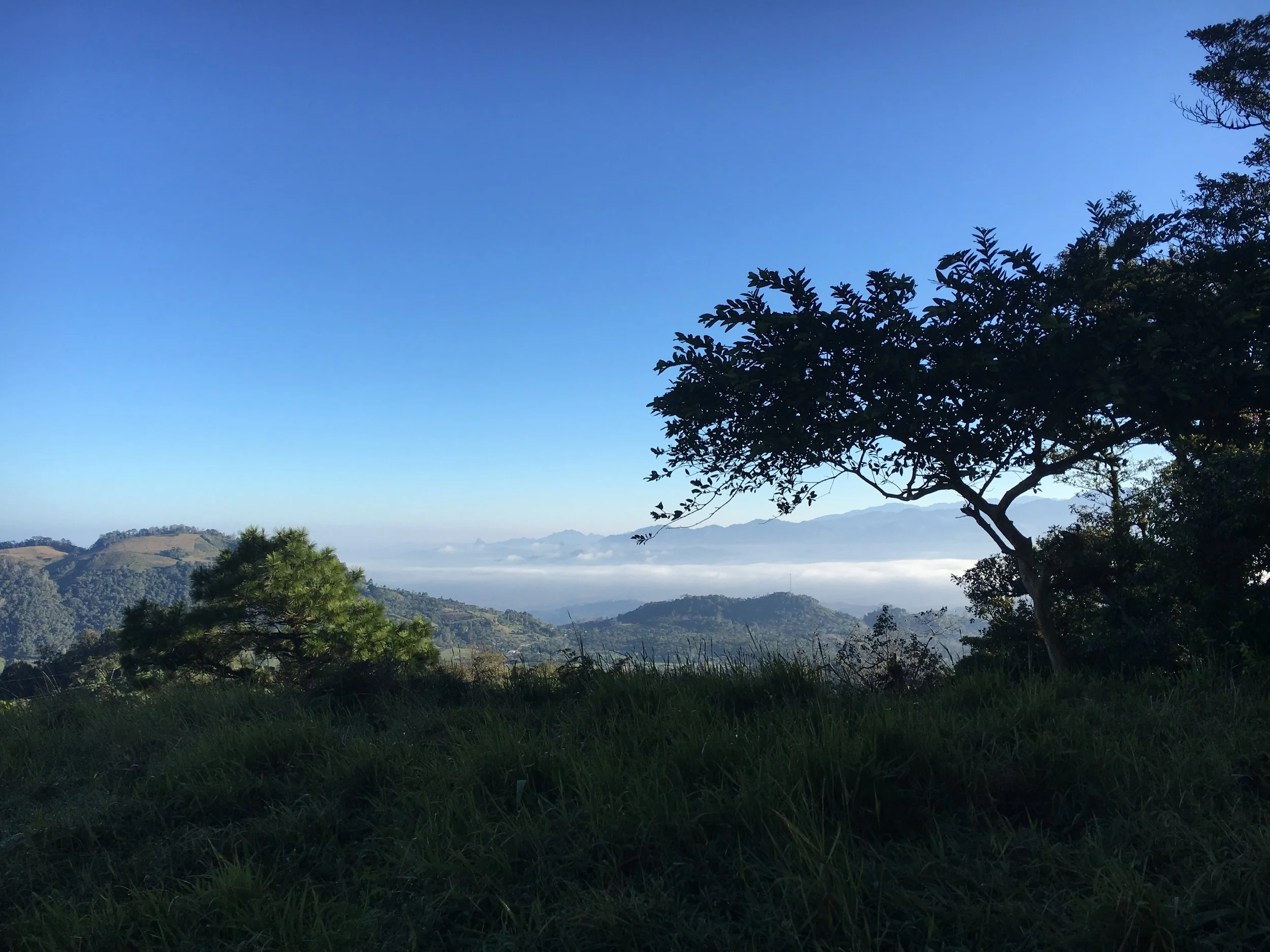Quality and Diversity
Thanks to the diversity in altitude, shadow, soil, and distance to high mountain peaks, we offer a versatile range of high quality coffees and an extended harvest season. The presence of fruit trees as diverse as banana, lime, tangerine or passion fruit, further enriches the flavors of our coffee cultivars.
Drop us a line if you wish to know more about coffees from one particular zone or variety.
The location of our farms can roughly be divided in three all encompassing zones.
Mercedes
El Playón Mercedes
The epicenter of our activities, at 1,350 meters (4,500 ft) , where our dry and wet mills are also located, as well as our storage and offices. This is where much of our coffees are dried and processed, and many of our members live in a wide circle around it, in zones like La Mora, El Rosario, El Plan, and El Playón. While temperatures vary according to exact altitude (the lowest part is El Rosario, mostly around 1250 meters, El Playón is the highest part, from 1,500 to 1,600), the conditions are comparable.
The soil is typically clayey and loam, with plenty of nutrients and natural shadow is mostly provided by cypresses, liquidambar, and lamcinca trees. Most farmers plant fruit trees for additional shadow, like bananas, plantains, and often various types of citrus trees, which also add a typical, rich flavor to the coffee beans.
Rainfall is generous when it’s most needed, from May to October, when the plants need water to grow healthy beans. During the harvest season, from November to March, it’s generally dry, which means access roads can be improved and farmers can do their work in ideal weather conditions.
San Marcos
San Marcos de Ocotepeque, where many of our members live.
San Marcos is the largest town in our area, at 950 meters. Many of our members live here, and their fincas are spread all over the surrounding hills, mostly between 1,100 and 1,400 meters (3,700 and 4,700 ft), although some own land up to 1,600 meters.
This zone has the most temperate climate, and it’s where the harvest starts earliest, sometimes as early as late October, right when the rainy season starts to make room for sunshine.
The soil is very clayey and homogeneous, with lots of organic matter from trees and wildlife. There is less natural shadow here, mostly from cypresses, and farmers plant lots of additional trees to provide adequate conditions for their plants. This also helps to further reforestation, attract birdlife, mitigate erosion, and keep soil nutrient rich.
Güisayote
The most remote and - on average - highest zone where we grow coffee, is also the one that is located nearest the mountain range of Guisayote, which provides protection, as well as frequent fog. The fog, in turn, provides a beneficial degree of humidity and a natural protection against overly generous sunshine.
Most farms in this area are located from around 1,400 to 1,800 meters (4,700 and 6,00 ft) and there is a lot of natural pine forest in this area. Therefore, planting trees is significantly less customary, although many of our members often plant at least some fruit trees, also for their family’s personal consumption of bananas, plantains, or fruits like orange, passion, or tangerines.
The soil here has a deep layer of nutrients and is solid due to the pine forests and abundant presence of oak trees, the fallen leaves of which nurture our coffee plants.
Climate is cooler here and the harvest usually starts at least a month later than in some other areas, but it lasts well into the month of March. Rain is often less abundant due to the vicinity of the high peaks, but this is entirely compensated because of the frequent fog and forests, which retain humidity very well.
The white 'mildew' are micro-organisms, very nutritious for coffee plants.

